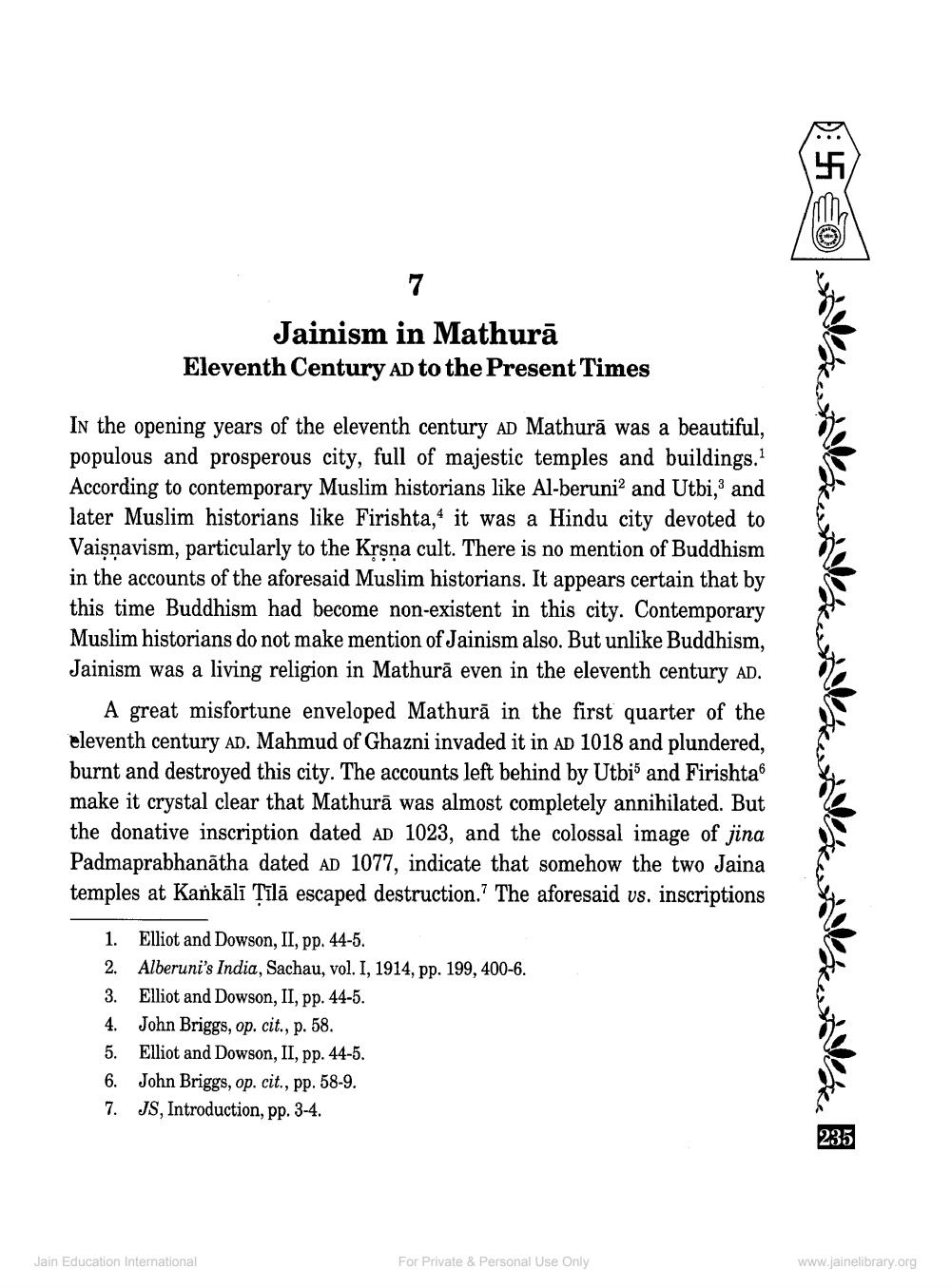________________
Jainism in Mathurā Eleventh Century AD to the Present Times
In the opening years of the eleventh century AD Mathurā was a beautiful, populous and prosperous city, full of majestic temples and buildings. According to contemporary Muslim historians like Al-beruniand Utbi, and later Muslim historians like Firishta, it was a Hindu city devoted to Vaişņavism, particularly to the Krsna cult. There is no mention of Buddhism in the accounts of the aforesaid Muslim historians. It appears certain that by this time Buddhism had become non-existent in this city. Contemporary Muslim historians do not make mention of Jainism also. But unlike Buddhism, Jainism was a living religion in Mathurā even in the eleventh century AD.
A great misfortune enveloped Mathurā in the first quarter of the eleventh century AD. Mahmud of Ghazni invaded it in AD 1018 and plundered, burnt and destroyed this city. The accounts left behind by Utbi and Firishta make it crystal clear that Mathurā was almost completely annihilated. But the donative inscription dated AD 1023, and the colossal image of jina Padmaprabhanātha dated AD 1077, indicate that somehow the two Jaina temples at Kankālī ļīlā escaped destruction. The aforesaid vs. inscriptions
1. Elliot and Dowson, II, pp. 44-5. 2. Alberuni's India, Sachau, vol. I, 1914, pp. 199, 400-6. 3. Elliot and Dowson, II, pp. 44-5. 4. John Briggs, op. cit., p. 58. 5. Elliot and Dowson, II, pp. 44-5. 6. John Briggs, op. cit., pp. 58-9. 7. JS, Introduction, pp. 3-4.
235
Jain Education International
For Private & Personal Use Only
www.jainelibrary.org




